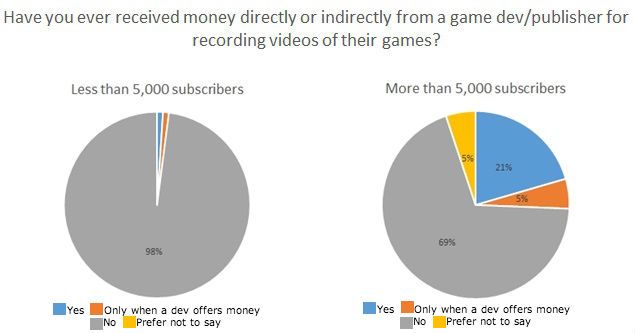Big Data has transformed marketing and game design, particularly on mobile platforms. The Mobile Beat panel on Big Data brought together some top publishers and providers on how they’re leveraging big data to help marketers engage the right user in the right moment. In this segment, panelists discussed how Big Data affects both game design and marketing, and what the future holds for Big Data and marketing.
Particpants on the panel were Paul Longhenry, VP and GM for business & corporate development, Tapjoy; Mike Lu, VP product marketing, GREE; Fabien-Pierre Nicolas, GM mobile, Perfect World; and Omer Winkler, director of product marketing, AdTruth. Note: Part One of this panel appeared last week.
One of the things we’ve talked about here is that we’re collecting data on a wide variety of things, both on marketing and demographics of the user, and also on the gameplay itself. Is there a fundamental difference from the game data that gets funneled to the game devs and designers versus what gets funneled to the marketers, or is it data that everyone should look at?

Paul Longhenry, Tapjoy
Paul Longhenry: I think that data is most valuable that is used across all channels. While we help developers monetize by marketing to their users, there’s a lot of brand advertising as well. Understanding that someone just completed Level 17 after having failed after trying 5 times is an incredibly important signal. You’ll want to deliver a message at that point and maximize the impact for a brand advertiser. Similarly if a user is at Level 12 after failing 8 times, a game developer might say ok that level is too hard and that’s actionable data for them, for us it’s time to bring Samsung in to give the user some currency as a gift — that sticks in a consumer’s head, so the context around the engagement in the app tells you about the emotion of the consumer at that point, and that’s really valuable.
Omer Winkler: In this case, everything you learn as a marketer applies to business as a publisher. As a publisher, what you want to do is best represent your audience to advertisers, whether it’s through an ad network or you sell your inventory through an exchange, your ability to represent your audience relies on how good you are making sense of this data , how good you are at deeper understanding your user segments etc. We talked about how this also correlates with your ability to link your data to data that’s outside of your environment. How you can use data providers to enrich your segments and profiles so that when you do talk to other companies for monetization purposes, whether it’s an ad partner, ad networks or exchange, you can sell more robust segments against your users and inventory.
Mike Lu: All data falls into two buckets: LTV (life time value) or CPI (cost per installation). It’s not just about LTV of users buying digital goods, even how those ads can increase the LTV of that user. For CPI, is the banner the right banner Are you reaching the right audience Are your ads done right Is your retention making sure that cost is greater or less than what you can actually afford So every data point should drive to those buckets, and if not, we’re looking at inconsequential data at that point. Unless you can correlate to one or the other, it’s smoke data and there’s a lot of that out there.

Mike Lu, Gree
Fabien-Pierre Nicolas: We’re going to go even further from that, and go from two sets of data to one. If you look at the landscape for apps, you can see that free-to-play won the battle a while back. If I were to pick only one metric, it’s time, number of sessions multiplied by time per session per day.
Whether it’s a game or a bunch of apps, if it’s your first app and people are connecting less than 5-10 minutes a day you should truly ask yourself what’s wrong with my product. If, on the opposite, you’re seeing 90 minutes, that’s definitely a winner, were going to double down because users are voting with their time which is the most precious currency a lot of them have.
A lot of them don’t have the money to spend so they’re not monetizing, but they do have the time and they do have the devices, and technically they provide value in other ways. They write wikis, they post videos on YouTube, they may not spend but they’re still great for community, they’re your app advocate. I don’t think we should discount that. They have a key use to facilitate acquisition of other users organically. So look at the time, that is the key.
Look at comparable apps. There’s a bunch of tools out there to give you benchmarks to see if your app is doing well or not vs others.
One of the most common pitfalls is not factoring in that UA will muddy your metrics big time. Especially when you start to funneling users from nonincentivized and incentivized channels. If UA team doesn’t talk to Product team and keep them apprised on a day to day basis, or at least once a week, and Day One retention crashed, they’ll be like what happened Why are they not completing the tutorial It might just be that you just switched SDKs, then you know that X percent of your users will drop out right away, and its not a big deal, your product team should just sort out those users. It happens often that the great metrics you see early on will drop by at least 50 percent when they start doing UA at scale. So they’re doing modeling thinking that it’s going to be amazing making $200 million a year, and they’re not making a tenth of that.
Looking ahead next year, what are the biggest opportunities and threats What’s coming in terms of exciting new technology and hardware?
Paul Longhenry: The biggest opportunity for the whole industry is unlocking brand advertising, brand advertisers have been relatively slow to embrace mobile, they’ve tested it out, banner ads don’t work, they don’t leave a lasting impression at least not a positive one on consumers. There’s a lot of experimentation with Tapjoy and others that’s leaving great brand engagement experiences and when you think about the opportunity for the whole ecosystem to make money off of the mainstream consumer who doesn’t spend money in an app, it’s brand advertising. The television advertising industry today is still $70 billion a year and none of us watch commercials. There’s better ways to spend those advertising dollars to engage consumers where they’re spending their time and where they really appreciate it. From our perspective, that is the most exciting one.
Omer Winkler: The biggest opportunity for the industry is expanding what we call the universe of known users and being able to recognize your users across different channels, platforms, devices, and that in turn will drive more spend into mobile because if you look at the disparity between time spent in mobile and ad dollars spent in mobile there is a huge opportunity in the market today.

Omer Winkler, Adtruth
Brand and performance marketeers would love to spend in mobile but for them mobile is just one channel. They have so many channels that if they cannot activate their data in mobile, if they cannot find an environment that will let them holistically market to their consumers, then they will not spend. As we work with major retailers, banks etc., we see how they slowly shift spend into mobile. As the data becomes more transparent and as you allow them to activate even more of their offline data they have in the mobile channel, they can improve their attribution and better measure campaigns, etc.
Mike Lu: There’s lots of things to be excited about. The market is just starting out, in fact GREE is just starting a new venture in the last minute hotel booking business, talking about a games company getting into that space. There’s tons of opportunities. My favorite are the opt-in on demand apps, whether it’s food, laundry, even Uber themselves are testing Oakland to deliver food.
What is the SalesForce of mobile . . . anyone Oh, that’s because there isn’t one!
So opportunities are there, and in the coming years we’ll see companies spawn out of nowhere have a huge impact in the market space changing what we do everyday.
Fabien-Pierre Nicolas: Any global players that take the best of the Western world in terms of a mobile app user experience and sense of design and merge it with Eastern developers sense of monetization in seizing the moment with very strong engagement — that will be very exciting. We can learn from each other.
In China and Korea, core gaming is in the top 30 grossing apps, the core gamers which were the bulk on console are now on mobile. In Japan and the West, it’s missing. Mid core apps are double true hardcore gaming apps, so there is an opportunity in the market there. Right now there are no great mobile FPS or MMO.
All the great genres on console are not represented on mobile yet. So that too is a great opportunity.
The true threat to our industry is distraction. Wearables is a good example, where a lot of money is being poured in by a few major platform holders and distracting developers time and resources. At the end of the day there haven’t been any great success stories. Ouya was one in the space last year that failed miserably and yet it distracted developers from making better apps for mobile, instead they were making better apps for Ouya. So far there’s been no traction, and as we’ve seen in free to play, scale is everything. But some developers get distracted, they’re told, hey here’s $200,000, go make your wearable app and then they miss 6-9 months working on the next mobile app. For tools, I see mergers happening in this space simply so that there can be one great tool that can do more than one thing. It’s slower than expected in the West, maybe a foreign investor will accelerate the mergers in this space.

Fabien Pierre-Nicolas, Perfect World
There are plenty of tools available to developers for collecting, analyzing and acting on Big Data. What would the ideal tool be?
Fabien-Pierre Nicolas: The ideal combined tool would let you track and act, with analytics, push notification, and cross promotion.
Paul Longhenry: When you talk about what the ultimate tool will do, segmentation kind of has to be at the core of it. Whether it’s tied to analytics or tracking your customer acquisition across different channels or driving your marketing messages or your re-engagement campaigns off push notifications, what you really want is all of that outbound activity to be triggered off of some common logic of what a person actually cares about, and that’s really what segmentation is all about, it’s inferring what someone cares about and taking action, and testing a given segment of users then continuing to optimize.
Mike Lu: If Google Adsense can marry Tableau, that’s what we all want.
Knowledge of the customer is critical. Building an audience is a more difficult task than building a product these days, and maintaining an audience with segmentation, data, and understanding of what your customers want, when they want it and why they want it — that’s what these tools are all about, isn’t it?
Paul Longhenry: The best example of this is Amazon, no two people in this room have the same Amazon experience, but it’s not always personalized to you, so they’re promoting different products at different times of day depending on when you like to shop, or different times of the year depending on your purchase history. They create segments that drives all the marketing you see on Amazon. And they didn’t use a specific tool for that, they built it in house, it’s their core competency, they drive 50 percent of their revenue off product recommendations rather than what were searching for in the search bar. That’s kind of best in class at scale. What you want to do is build the tools that allow someone much smaller than Amazon to have the same kind of advantages in reaching their consumer base.
Omer Winkler: Even if it’s not personalized, per se, it is still more relevant, so delivering relevancy is something you can do through deep segmentation of your user base.
Mike Lu: All of these are great ideas, but it’s not because we haven’t tried, it’s because we’re on a platform that isn’t open to us, UDID is going away along with a lot of other things, it’s just not possible right now to get truly correct data off Apple.
Omer Winkler: That’s actually part of what AdTruth does. As a provider of audience identification, this is exactly the hedge against Apple and Google that we create for our customers, helping them cover blindspots they have and giving them visibility into audiences where they have low visibility. We also give them better resolution so that they have a deeper understanding of whatever segments they’re looking at.
The market is dynamic and we cannot control what Apple and Google might do tomorrow, and how they might change things, so we have to find or build solutions that help us through whatever changes we encounter. Whatever you’re doing now that’s working great may not be working great in 6 months, the market may have shifted and you have to constantly adapt, don’t you?
Omer Winkler: Currently in the market you see a huge battle over digital identity, it’s much bigger than mobile and apps, it’s a battle over who owns the digital identity today and segmentation and identification is a byproduct of that. Facebook, Google and Apple are the three major players in this space. The message is that big data gives you a lot of opportunities, the question is do you own the data or is Facebook the one who owns the data and who gives you some aggregated purview of whatever data they own. We see in the market a lot of brand advertisers looking at this as an opportunity to build identification capabilities that are platform agnostic and they’re saying we need an in-house neutral solution that will help us as a hedge against those players.
Many thanks to the panel and for you joining us today.
 Image source: Gamasutra
Image source: Gamasutra
 Paul Longhenry, Tapjoy
Paul Longhenry, Tapjoy
 Mike Lu, Gree
Mike Lu, Gree
 Omer Winkler, Adtruth
Omer Winkler, Adtruth
 Fabien Pierre-Nicolas, Perfect World
Fabien Pierre-Nicolas, Perfect World

